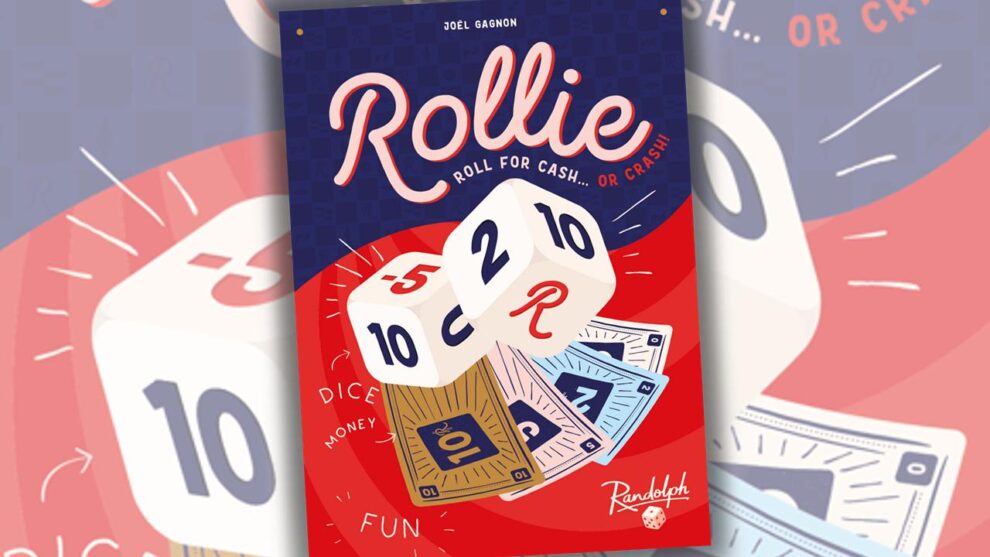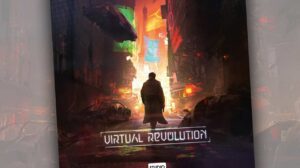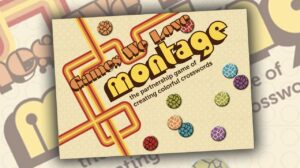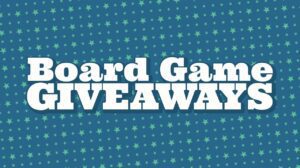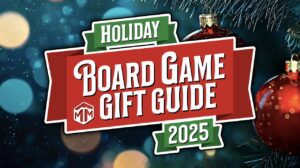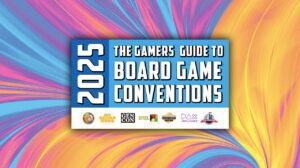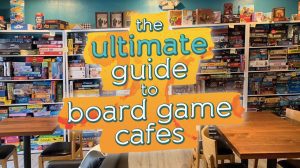Disclosure: Meeple Mountain received a free copy of this product in exchange for an honest, unbiased review. This review is not intended to be an endorsement.
If you’ve played the game Hot Streak as many times as I have, you notice what happens when the game is played in the right environment versus the wrong one.
In the right environment, Hot Streak is all about screaming. You don’t really notice that the game’s ruleset is shockingly light on actual decisions, you yell as you shout obscenities at a hot dog mascot pawn, you gamble paper money on side bets that are more ridiculous than anything you’ve seen on last week’s episode of Love Island USA, and then 30 minutes later, you go back to a boring life of entering data into spreadsheets. (Hopefully, your life is more exciting than mine.)
In the wrong environment, Hot Streak has no screaming. And when no one is yelling, almost every gameplay problem it presents comes to light. I’ve only seen this once, but it was quite telling. Hot Streak is an experience, one that I think is convincing people that it is a great game, but the one time I saw it with zero screaming, I openly wondered how this game made it this far without anyone else noticing how fragile its system can be in the wrong hands.
Rollie (2025, Randolph) is, in the right environment, an absolute blast. I mean it. When I saw it at Gen Con with the team at Hachette, I had a blast rolling dice, taking money, losing money, making decisions, and watching great drama unfurl in the last two rounds of its seven-round setup. There were loud, pronounced oohs and aahs. Across five players, everyone experienced the highs and lows of pushing one’s luck.
In the wrong environment, Rollie isn’t great. In fact, due to a strange series of rules, there’s an outside chance that your seven-round game of Rollie doesn’t feature any decisions at all.
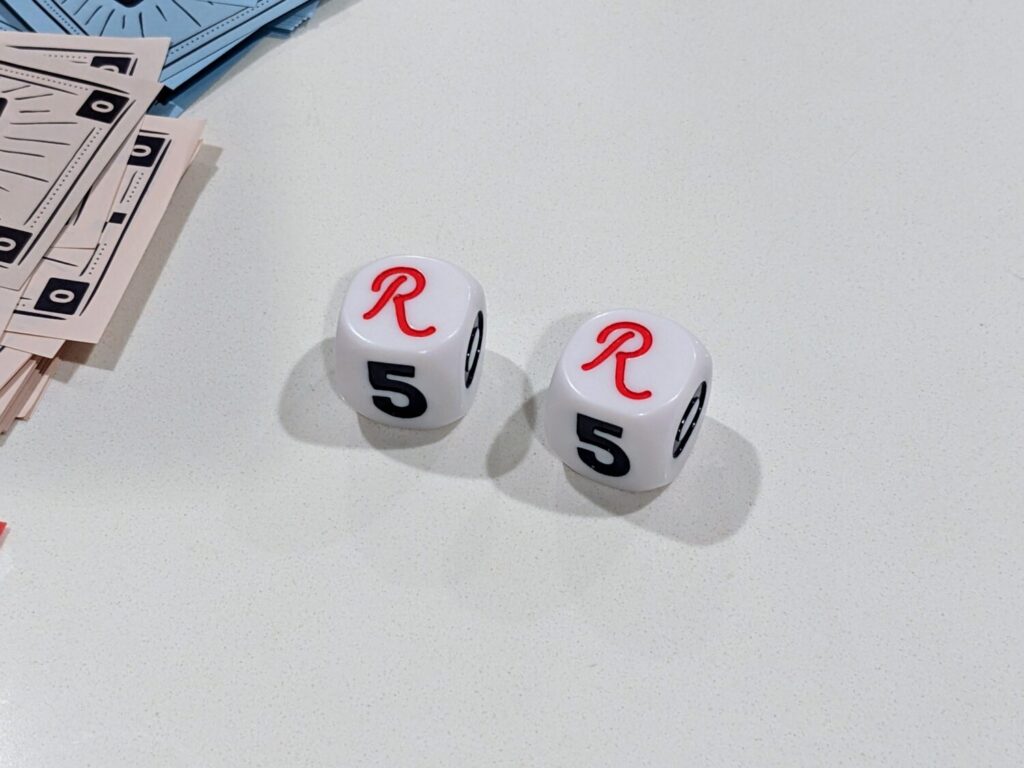
The Right Environment
Rollie is a press-your-luck gambling game for 2-6 players. The rules are so simple that the back cover of a small instruction booklet features everything I need to teach the game to new players.
The table setup requires placing five sets of bills into a central play area, bills in denominations of $10, $5, $2, $0, and minus $5. These bills are double-sided. When showing their top face, they merely call out what they will be worth if they are moved from a player’s Stake area into a player’s Wallet area. Their bottom face shows what looks like the top half of a person’s back pocket, as if the bill has been pocketed and secured.
Any player starts by rolling two identical, six-sided dice. Each die face represents one of the five bill values, with a sixth face featuring a large “R”, which is a wild symbol. If the die roll ends up with two different values, players can take one bill from the pile matching one of the two rolled symbols. (If an R was one of the two die faces rolled, a player can use that to take any value bill into their Stake.)
Instead of taking a bill to add to their Stake, they could instead decide to pass, take no money, and secure all money currently in their stake by flipping those bills to their Wallet side. That way, the money will be counted during end-game scoring…but by doing that, a player removes themselves from earning any more cash in the current round.
If doubles were rolled, a player examines their Stake. If they have any bills matching the doubles that were just rolled, they have “crashed” and lose all of the matching bills from their their Stake. If they don’t, all money in the Stake remains in front of those lucky players. And if the doubles that were rolled were two wild Rs, all players lose all money in their Stakes, regardless of the values there.
A round of Rollie ends when doubles are rolled, or if all players have earlier passed to secure their Stake. Even if doubles are rolled to start a round, that still means the round is over…which both makes and breaks the Rollie experience.

“Wait…The Game is Over?”
Rollie was designed by Joel Gagnon, who is also the Head of Studio at Randolph. No developer is credited at the back of the game’s rulebook, but I have questions for whoever was responsible for that part of the game’s lifecycle.
That is because the rolled doubles mechanic feels broken, or at a minimum, deeply dissatisfying.
It is entirely possible—even though it is highly unlikely—for four people to step to the table, set up a game of Rollie, then roll seven straight pairs of doubles, ending the game without anyone having any money. I’ve read the rules a few times, played it with a member of the publisher’s leadership team, and played the game a handful of times in different environments, so I know the rules well now. (It helps that there aren’t many of them to learn.)
I played a game of Rollie that ended with four of the seven rounds ending right after starting up. That’s right—the round was set up, money was either stashed or returned to the supply, then the first player took their turn and rolled doubles.
No one had any money yet. No money was left over from a stash in the previous round. So, that was that, and a new round was begun. No one made any decisions or had any money…grumbling took place, then the next round kicked off.
I would imagine that this happens at least once in most games of Rollie, with an empty round. When it happens once, it’s not so bad. When it happens twice, it creates a lot of questions. When it happens four times, you wonder how it was that this kind of rules slip happened with dozens if not hundreds of playtests.
Or maybe it never happened at all. That would be surprising, but it still wouldn’t excuse the issue I’ve seen with so much empty action in multiple rounds.
A note about the bills; naturally, the first question I get when I teach Rollie is “why would I ever want to take $0 bills or negative bills into my possession?” That’s because Rollie’s push-your-luck mechanics really shine when deciding on whether to take on a lot of zero dollar bills: at the end of the game, the player with the most of each bill type gets a bonus that has always swung the game towards the favor of the person who went hard on those low-value bills.
Your mind is saying “I would take $10 bills every turn, since they are worth the most.” But the $10s are the bill type with no bonus token available. If you end the game with the most negative $5 bills, you get a $100 bonus token! Managing your way into having just a couple of negative $5s, but having just one or two more than a competitor, can be a massive swing.
So when Rollie is, ahem, rolling, it’s a good time. People always scream when a player busts on doubles, losing a large Stake total. They also scream when they realize that they are NOT going to lose their Stake—at least, not right away—because they have three of the five bill types, but the doubles that were rolled were not one of them. That huge sigh of relief is something else (and a feeling I’ve already experienced multiple times during my plays).
On the flip side, Rollie can really bust and become a game that isn’t much fun. In one play, a player ended the game with no cash. I don’t think he was even playing a particularly risky version of the game; bad luck can set in and destroy a player’s hopes and dreams quickly. No one, even the winner of that play, enjoyed watching what happened during that play. Rollie only takes 20 minutes, so it wasn’t the end of the world…but still.
Rollie is worth a look because its footprint and price point make it a very accessible party game. Just know that the highs are high and the lows are lower than I anticipated. Here’s hoping that you don’t roll doubles very often during your play sessions!


